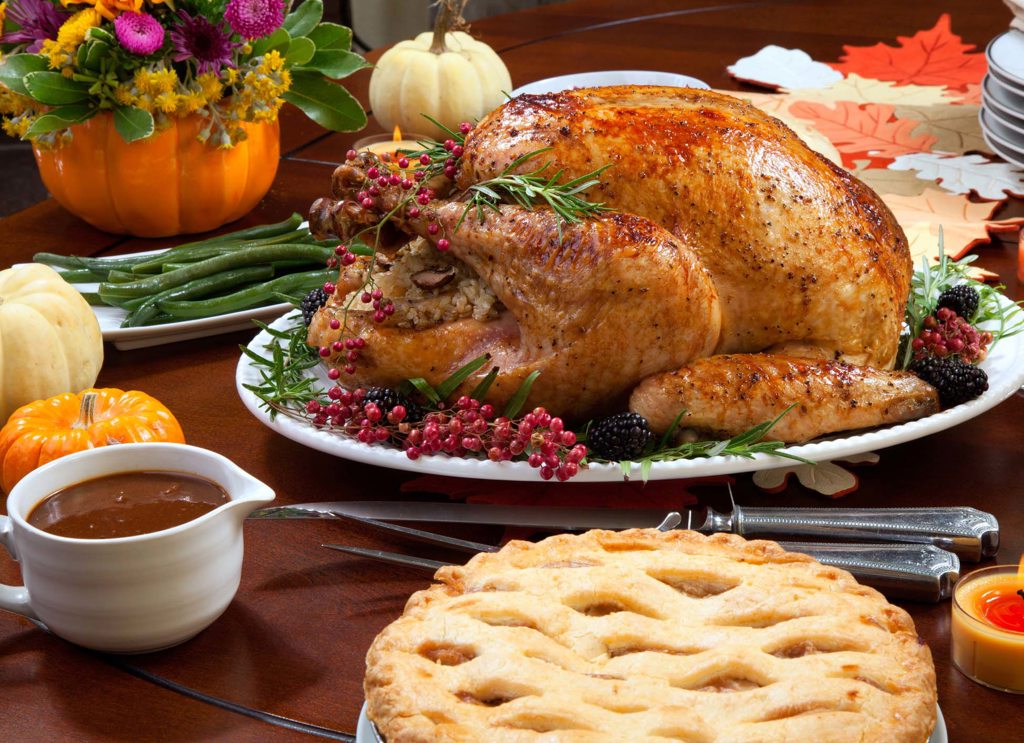
A healthier Thanksgiving is easier than you think
Thanksgiving is a lot of things. It is a day to give thanks and reflect on the previous year. It is an opportunity to make new memories with friends and family. And it is a time to gather around the table and share a communal meal.
But there is one thing Thanksgiving is not: healthy.
Americans consume between 3,000 and 4,500 calories during the Thanksgiving meal, according to the Calorie Control Council, and that does not include going back for seconds. That far exceeds the USDA’s recommended 1,600 to 2,400 calories a day for women and 2,000 to 3,000 calories for men.
If that does not startle you, perhaps this will: during the Thanksgiving meal, you may eat as much as one and one-third stick of butter. You may also consume 150 grams of fat and 75 grams of sugar, nearly three times the recommended amount of each.
These are shocking numbers, but do not let them ruin your holiday.
“Research shows that it is behaviors sustained over weeks and months, rather than overindulging for one day, that will have a significant impact on your health,” said Karen Pritts, MS, RDN, CDCES, LDN, Director of Clinical Nutrition and Diabetes at Penn Highlands Mon Valley. “An isolated event, unlike repetitive lifestyle habits, is not likely to disrupt your body’s composition.”
That said, overeating on Thanksgiving can ruin your holiday, even if it does not ruin your overall health. Overeating can lead to uncomfortable bloating, nausea, heartburn and abdominal discomfort. It can also cause the body to go into postprandial somnolence, also known as a “food coma.” Feeling sleepy and uncomfortable is not a fun way to spend Thanksgiving, and there are some easy ways to trim back some of those calories without depriving yourself the joy of the Thanksgiving feast.
No, you should not skip breakfast (but do not overdo it).
You may be tempted to skip breakfast, or lunch if your Thanksgiving meal is at dinnertime, but resist that temptation. If you starve yourself ahead of time, you may be more likely to eat much more than you would have had you eaten beforehand. Rather, eat a light breakfast and lunch, which will still give you plenty of room for the big meal but will not make you ravenous when you sit down at the table.
Fresh hors d'oeuvres are the best hors d'oeuvres.
There will be plenty of rich, decadent dishes during the proper meal, so plan to make the appetizers fresh and healthy. Think shrimp cocktail instead of pigs in a blanket or pumpkin crostini rather than fried goat cheese.
Skip the seconds.
How often have you regretted going back for seconds? A piece of pie is essential on Thanksgiving, so skip the seconds and save room for dessert.
Go light on the booze.
Calories from alcohol add up quickly. A wine spritzer, made with half a glass of red or white wine and half a glass of seltzer, is just as celebratory with half the calories. Garnish your spritzer with a lime wedge and a couple of cranberries for a festive touch.
Drink plenty of water.
Speaking of drinking, make sure you stay hydrated. Drinking water can actually help suppress your appetite, and staying hydrated could even help kick start your metabolism.
Pay attention to the signs of overeating.
When you first begin to feel some pressure or tightness in your stomach, you have likely reached a comfortable fullness and should be aware of overeating. Other signs to stop eating include food not tasting as good as it did at the beginning of the meal and beginning to feel sleepy. Eating slowly is a great way to avoid overeating. When you eat too fast, it is easy to go past the point of fullness before you even realize you are stuffed. Eating slowly gives your stomach time to signal to your brain that it is full.
Leave the table.
Finally, get away from the food and the table. After the meal, if weather permits, go for a nice, long walk with family and friends. Other options include playing board games or reviewing family photo albums.
“There are many benefits to walking after eating,” said Mrs. Pritts. “It can regulate your blood sugar levels, improve digestion, reduce bloating, burn calories and even lower your blood pressure.”
Penn Highlands Healthcare provides nutrition specialists who help educate and counsel patients on nutrition guidelines as well as disease prevention and management. They teach people how to read food labels, understand carbohydrates and map out meal plans. Plus, they provide recipes that are easy, healthy and tasty. To learn more, visit, www.phhealthcare.org/nutrition/.
